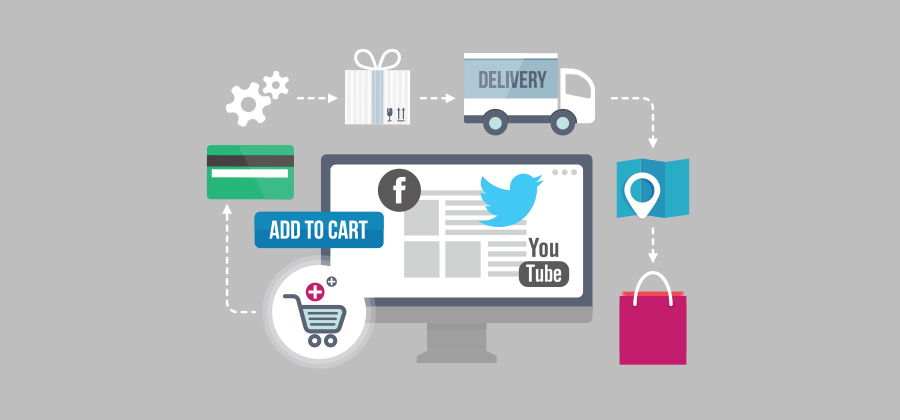Managing a company boils down to continuously making choices. If decisions are not taken a company cannot function, let alone grow. Setting out a high-quality decision-making process is therefore vital to help managers carry out their roles and guarantee the company's future.

The process of making decisions within a company is often a complex one, but it is crucial to ensure the organisation operates well. While we can establish that "deciding" means making choices by comparing several options, some aspects of being able to "take the right decisions" remain to be clearly defined. As the consultants McKinsey & Company say in their latest podcast, which invites experts in management to give their views, "all good decision-making relies on adequately categorising the decisions to be taken, by whom and by when they must be made".
"Deciding" does not mean "doing"
The experts brought together by McKinsey say that in their experience, organisations face a number of common pitfalls. The first of these is an excessive concentration of the decision-making process in the hands of senior management, which correlates with a lack or absence of autonomy and initiative on the part of employees. Among other recurring problems are: inadequate circulation of information or a slow decision-making process (especially caused by a lack of autonomy). We should also note that choices taken alone also receive lower levels of support. Finally, managers need to realise that taking a decision is not enough – they also need to implement it.
Four major decision types
McKinsey classifies business decisions according to their scope (far-reaching or restricted) and recurrence (frequent and familiar or rare and unknown). This framework for interpretation allows us to define four major types:
- the "big bet decision" (far-reaching and rare) has decisive, fundamental implications for a company's fate. Examples include an acquisition or choice of a new head office.
- the "cross-cutting decision" (far-reaching and frequent) could concern a change to the firm's trade policy or its supply chain, for example. This type of decision involves several departments at once, and incorporates numerous smaller-scale choices.
- the "delegated decision" (restricted and frequent) requires neither consultation nor prior planning. It can be delegated to particular positions within the company.
- the "ad hoc decision" (restricted and rare) cannot be anticipated or prepared. These decisions are taken when they arise.
Good Practice
A "map" of decisions is not enough to create an effective decision-making process. Each type demands a specific approach that defines the major phases to work through, the roles assigned (at all levels of the structure), as well as time frames. The experts at McKinsey also highlight examples of bias that can lead to the wrong choices, including the "endowment effect" – where something gains in value once a person possesses it. However, the following are on the list of "good practices": a steadfast commitment to decisions taken, gathering the right level of information, and the importance of viewing the reality objectively. And finally, the way in which decisions are communicated is also a key part of the process, especially if it answers the questions "why?" and "what are the consequences?" which are often crucial to staff.
10.09.2020
Export plans? Make sure you talk to our experts first
To prepare your international adventure properly, ask yourself the right questions and talk to people who have done it all before: partners, customers, fellow exporters and experts.
BNP Paribas Fortis listens to the questions asked by international entrepreneurs and offers reliable advice. "A lot of exporting companies ask for our help when it's too late", Frank Haak, Head of Sales Global Trade Solutions, says.
Entrepreneurs with little export experience are often unaware of the bigger financial picture. So what do they need to take into account when they set up a budget for their export plans?
Frank Haak: "Budgeting and pricing are affected by a lot of crucial factors: working capital, currency exchange risks and currency interest, prefinancing, profit margins, insurance, import duties and other local taxes, competitor pricing and so on. We always advise customers or prospects to start from a worst-case scenario. Quite a few companies are insufficiently prepared for their first international adventure: they see an opportunity and they grab it, but quite often disappointment and a financial hangover are not far away.
Our experts have years of export experience and the BNP Paribas Group has teams around the world. This means that we can give both general and country-specific tips. Let's say a machine builder wants to design and manufacture a custom-made machine. We recommend including the machine's reuse value in the budget: can this machine still be sold if the foreign customer suddenly no longer wishes to purchase it or if export to that country becomes impossible due to a trade embargo or emergency situation?"
What type of companies can contact BNP Paribas Fortis for advice?
Frank Haak: "All types! Entrepreneurs are often hesitant to ask for advice. Sometimes they are afraid that it will cost them money. However, the right advice can save them a lot of money in the long run. For example, we recommend a letter of credit or documentary credit to anyone exporting goods to a foreign buyer for the first time. This product is combined with a confirmation by BNP Paribas Fortis to offer the exporter the certainty that it will receive payment when it presents the right documents and to assure the buyer that its goods or services will be delivered correctly."
The consequences of not seeking advice: what can an exporter do in case of non-payment without documentary credit?
Frank Haak: "If you are not receiving payment for your invoices, the counterparty's bank can be contacted in the hope that it advances the payment on the customer's behalf. However, we shouldn't be too optimistic in that respect: the chances of resolving the issue without financial losses are very slim. Once you have left your goods with customs, you usually lose all control over them. Hence the importance of good preparation: listen to and follow the advice of your bank and organisations such as Flanders Investment and Trade (FIT). It will protect you against a whole host of export risks."
BNP Paribas Fortis
- is the number one bank for imports (approx. 40% market share) and exports (approx. 25% market share) in Belgium (according to the statistics of the National Bank of Belgium): it offers advice/financing and can help you to discover new export markets through trade development;
- is proud that Belgium is one of the world's 15 largest export regions and is pleased to give exporters a leg up, for example by sponsoring the Flemish initiative ‘Leeuw van de Export’.
Source: Wereldwijs Magazine
01.05.2020
The conversation manager: essential and permanently online
Coordinating a company's social media strategy is a task in itself. Who will you use to handle this? And what about involved customers who suddenly get too involved?

Because of social media, the role of a traditional marketing manager is evolving more and more towards being a conversation manager: someone who facilitates consumer communication. This includes communication between customers themselves and communication between the customers and the company.
Some key tasks in the conversation manager's job description are:
- Uniting and activating ‘branded fans’, as they will recommend the brand to friends and family.
- Listening to what people are saying about your company and seeking their active contribution to your products and strategy.
- Creating content worth distributing in order to encourage discussions.
- Managing these discussions.
- Ensuring your work is very customer-oriented and customer-friendly through customer care, i.e.by responding faster and providing more than what the customer is expecting.
Some companies are big enough to hire a full-time conversation manager. In other cases another employee will take on this role part-time. A third possibility is using a specialised company.
Caroline Hombroukx, conversation manager at content marketing company Head Office:
“No matter which option you go for, communication in social media must come across as personal. There is definitely a reason why large companies such as Telenet and Belgacom have created a fictitious person to deal with their customers; Charlotte and Eva respectively. The conversation manager also has to know the company and its social media strategy very well. It may therefore be an advantage if someone in the company itself takes on that role. That person is right at the source and so can distribute information, take a quick picture and post it online, etc.
This task is not for everyone. A conversation manager must have experience with social media, have fluent communication and writing style and must be empathetic, positive and solution-oriented in his or her dealings with customers. Prior training is not a luxury, because the employee must be very aware of the company's content strategy. The audience is varied and unpredictable. You have to decide time and time again whether certain content is or is not suitable for your target group. It is also not a nine-to-five job: the online world keeps on turning even at night or at the weekend."
The advantage of hiring a conversation manager from an external company is that in principle the expertise is present. In that case the challenge is to know the company to such an extent that the customer has the impression that he or she is talking to a real employee.
Getting angry is out of the question
Traditional marketing and advertising are a one-way street. If they do not work, they are a waste of money. However, they are not likely to result in angry comments. A company venturing out on Facebook, Twitter or other social media, can be sure to receive comments and reactions. Including negative ones. Caroline Hombroukx:
“On social media the consumer is suddenly right next to you banging the table. It is important to respond well to that. Getting angry yourself is out of the question. You need to respond by showing that you understand and you are taking the question or complaint seriously. Everyone following the discussion must see that the company is providing a quick answer and is trying to find a solution. If a mistake has been made, you can acknowledge this openly and honestly. You can also show the problem as something positive: as an opportunity to improve your brand, product or service. Of course you must find a suitable solution in the end. If the person sharing the complaint becomes too negative, you have to try and divert him or her to a private channel: a private message on Facebook, a direct message on Twitter, an e-mail or a phone call."
An enthusiastic, understanding response also works well if the consumer is sharing something positive about your brand, company or service. Thanking the consumer strengthens the bond between the company and the customer. Caroline Hombroukx:
"The dialogue with the target group is an opportunity to improve your product or operations through constructive criticism. Make customers feel involved. It creates a strong relationship. If you are publishing a magazine or starting a poster campaign for instance, you can let customers choose the best layout or title from three options posted on Facebook, for example. Everything that engages customers can only strengthen their commitment."
Social media dos and don'ts
- The consumer is always right (even when this isn't the case).
- Be open, honest and friendly.
- Use a personal style.
- Respond quickly to any questions or reactions.
- Stay positive and be understanding.
- Do all you can to engage your customers.
- Come up with a free gift every now and then.
- As a brand, try to avoid political topics.
30.04.2020
#StrongerTogether Biogazelle plays part in fight against coronavirus
Biogazelle is playing a huge role in the shared battle against the coronavirus. In record time, the Ghent biotech company has developed a test for detecting infections.
Since 2007, Biogazelle has offered support to the pharmaceutical and medical industries. The company develops revolutionary techniques for tasks such as detecting new illnesses, multiplying tiny amounts of genetic material to create analysable samples.
“In just 10 days, we have come up with an extremely sensitive coronavirus detection test,” says CEO Mieke Van Acker. “Our speed and flexibility have amazed the big pharma companies. We started with 2,000 tests a day, and that number has already shot up. But we are still a long way from our limit.”
Unprecedented collaboration
To drive capacity even further, Biogazelle has invested in a robot. “Very soon this will automate certain manual operations,” the CEO explains. “Inactivation of the virus is currently done manually. By automating this step in the process, we will significantly increase efficiency.”
Biogazelle is part of a coronavirus consortium established by minister Philippe De Backer that also includes three large pharma companies and a university. “We are joining forces to further increase the testing capacity in our country,” says Mieke Van Acker. “Such a collaboration is unprecedented.”
Every link is crucial
According to Van Acker, every link in the chain is equally important. “We ourselves are supported by Ghent University, UZ Gent and the Flemish Institute for Biotechnology. We have help from volunteers, and industry colleagues have also offered test apparatus.
But the financial support from BNP Paribas Fortis is as valuable as the scientific aspect.” This financial support consists of a credit line and leasing agreement. Biogazelle will also make use of BNP Paribas Fortis Factor, a series of solutions aimed at optimising work capital and the resulting financial needs.
02.04.2020
Social media and e-commerce: opportunities and risks
The huge popularity of social media brings new opportunities, but has resulted in some new stumbling blocks as well. What are the most recent trends? And how should you respond to them?

Social media such as Facebook, YouTube, Twitter, Instagram, etc. seem cutting edge, but the principle is as old as the hills: word of mouth, sometimes abbreviated as WOM in marketing. Even in the heyday of the mass media, positive recommendations from neighbours, family and friends remained important to a company's success. Newspapers, magazines and television advertising were the first channel introducing a new product to consumers, but word-of-mouth turned out to play a decisive role in what matters most: consumer behaviour. Consumers shared experiences and thereby affected the behaviour of their fellow consumers. Today, more than ever, they do so through social media.
Consumers persuading consumers
Social media are the contemporary, more sophisticated and super-fast successor of old-fashioned word-of-mouth advertising. They are a catalyst. Social networks allow people to exchange views, share experiences, express their dissatisfaction, etc. more quickly than ever.
In addition, more and more consumers are opting for a "social search" over search engines such as Google to find information. They consciously do not search the entire internet, but approach their friends on Facebook or contacts on LinkedIn or Twitter. It speeds up the search and makes the result more reliable. The idea is that if X thinks it is good/nice/beautiful, we will probably think it is good/nice/beautiful too. There is also the option to ask questions and really discuss the product or service you need information about.
Consumers talk about all sorts of products (offline and online), from new detergents to new car models. And it is not just young people who are sharing their experiences about products and brands. Young and old, male or female: everyone does it. All these recommendations between consumers are worth gold.
We can illustrate this with an example: computer manufacturer Dell assumes that 25% of its customers choose their brand after it has been recommended by another user. The average purchase value per customer is about 210 dollars. Based on this amount, the value of every recommendation is estimated at 42 dollars. The more consumers Dell can convince to buy its products, the more money it makes.
However, the reverse is equally true: bad word-of-mouth advertising can have devastating effects. Particularly in this age of social media, a bad reputation does not take long to spread.
Social media in 2014
Perhaps Facebook will no longer exist in ten years' time, but it will most certainly have been replaced by something else. Social media are here to stay. It is therefore important for companies to build a good social media strategy. They can start by thinking about which channel they want to use for which content and objective. What do you need to take into account?
- Content (the message to the consumer) is still the key part, but the importance of segmentation is increasing. The audience is varied, so not all content and every channel is suitable for everyone. As a company, it is best to divide your target audience into sub-target groups. You can then choose specific content and a channel per sub-target group.
- Create real-time content: define a number of key moments in the year in advance and use these wisely. The World Cup, back to school, the summer holidays, etc. are all events that happen regularly and companies can respond to in a clever way. The trick is to find a good link between the key moment and your product. Be creative in this respect. If a school bag brand presents its content at the end of August, it will have to use an original approach to avoid coming across as predictable.
- Social media are predominantly a mobile story: most consumers are switching to smartphones and tablets. It is no coincidence that the four best-known social networks are also in the list of most popular mobile apps: Facebook, YouTube, Instagram and Twitter. In any case, your content (both on the website and on social media) will have to be mobile-friendly.
- The importance of customer care is only increasing. Consumers will now use social media more than ever to find information, ask questions and make comments.
